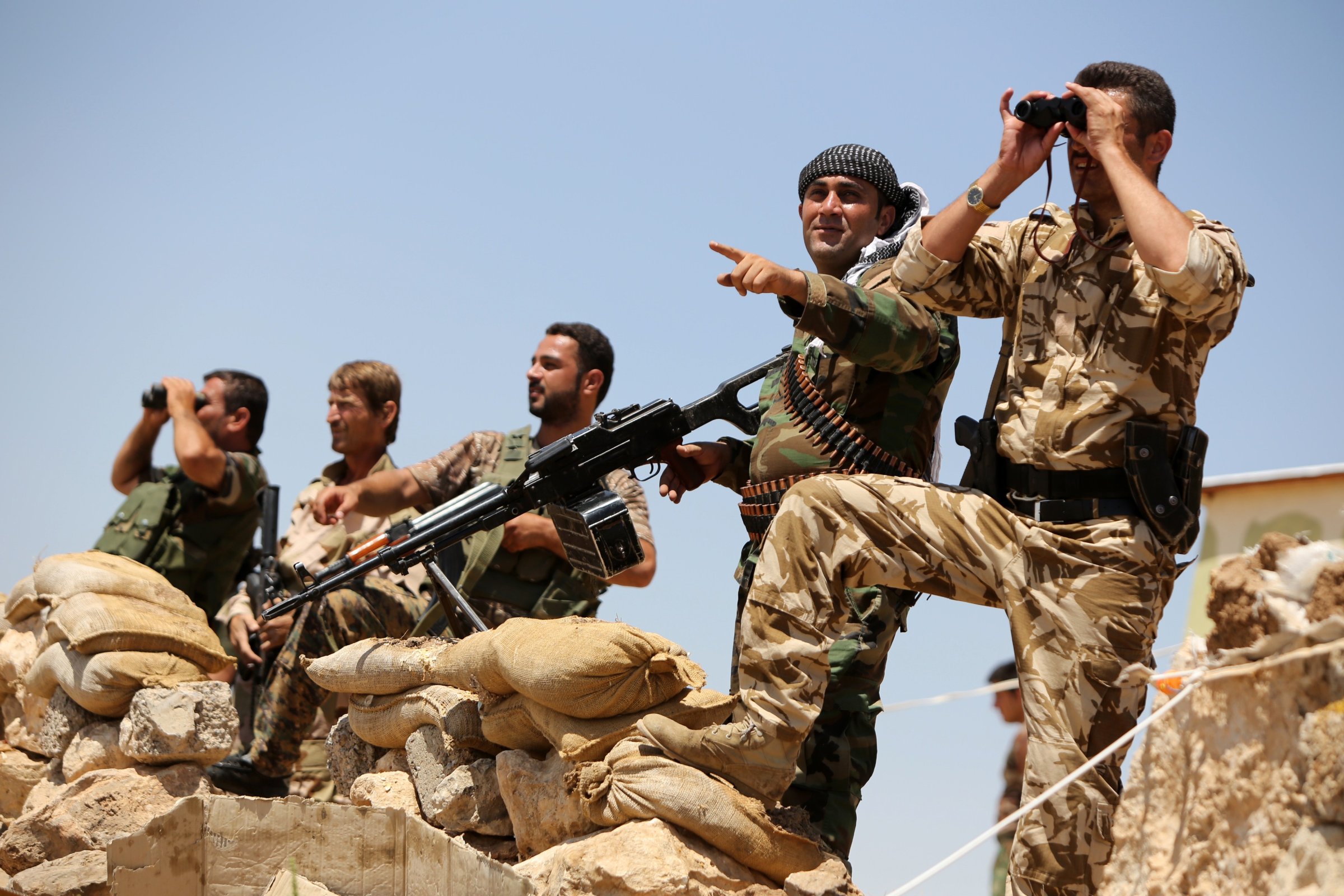
The contrasting views of two senior U.S. military leaders on the effectiveness of American air strikes against jihadist targets in northern Iraq could hardly have been more stark.
“Very effective,” Defense Secretary Chuck Hagel told reporters Monday in Sydney, Australia.
“Very temporary,” Army Lieut. General William Mayville, the director of operations for the Joint Chiefs of Staff, said later in the day at the Pentagon.
The conflicting signals were a sign of an Administration determined to do just enough to avert a humanitarian catastrophe without launching a third U.S.-Iraq war against the Islamic State of Iraq and Syria (also known as the Islamic State of Iraq and the Levant, or ISIL).
While F-15s, F-16s, and F-18s dropped 500-pound bombs on targets like artillery pieces, mortars and armored vehicles, aided by MQ-1 Predators and their 20-pound warheads, they didn’t appear to do much to change the situation on the ground. The U.S. Air Force and Navy are flying up to 100 attack, reconnaissance and support missions a day over Iraq.
Mayville’s briefing was as perplexing and unsatisfying as the 19 airstrikes the U.S. military carried out in Iraq through Aug. 11.
“I’m very concerned about the threat posed by ISIL in Iraq and in the region,” he said. “They’re very well-organized. They are very well equipped. They coordinate their operations. And they have thus far shown the ability to attack on multiple axes. This is not insignificant.”
So what is the U.S. military prepared to do to deal with this threat?
“There are no plans,” Mayville said, “to expand the current air campaign beyond the current self-defense activities.”
The U.S. military can only do what it is told to do, but the disconnect between threat and response seems especially wide right now. The goals are limited to rescuing the thousands (or tens of thousands; the Pentagon isn’t sure) of Yazidis trapped on, in and around Sinjar Mountain in northwestern Iraq, and to protect the Kurdish city of Erbil, where a small number of U.S. personnel, including about 40 recently-dispatched military advisers, are based. Warplanes launching the strikes come from air bases in Kuwait and Qatar and from the USS George H.W. Bush in the Persian Gulf, a carrier named for the President who launched the first U.S. war against Iraq in 1991.
“We assess that U.S. airstrikes in northern Iraq have slowed ISIL’s operational tempo and temporarily disrupted their advances toward the province of Erbil,” Mayville said. “However, these strikes are unlikely to affect ISIL’s overall capabilities or its operations in other areas of Iraq and Syria.”
Predictably, ISIS forces have begun to mix in with local civilians to elude U.S. attacks. “One of the things that we have seen with the ISIL forces is that where they have been in the open, they are now starting to dissipate and to hide amongst the people,” Mayville said. “The targeting in this is going to become more difficult.”
The U.S. has begun providing the Kurdish militias known as the Peshmerga with small-arms ammo directly, instead of funneling it through the central Iraq government in Baghdad, he added.
Anthony Zinni was the deputy commander of a U.S. effort to protect the Kurds from Saddam Hussein’s forces—Operational Provide Comfort—after 1991’s Gulf War. “The Peshmerga are fully capable, given the right weapons, equipment and support—like air support—of stopping ISIS in their tracks,” he says. “At least from the north.”
The number of Peshmerga waxes and wanes as the threats the Kurds perceive rise and fall. The U.S. estimated their fighting strength in 2011 at 70,000 to 80,000, but that number could double if all security and police forces are included.
“They’ve been fighting for a long time, against Saddam, with the PKK [Partiya Karkerên Kurdistan, or Kurdistan Workers’ Party] up in Turkey, and even in Iran,” says Zinni, who ended his military career as chief of U.S. Central Command from 1997 to 2000. “They’ve been fighting an insurgency for a hell of a long time because they want a state. They’re also fighting for their homes, their families and their kids—when [Iraqi Prime Minister Nouri al-] Maliki sends a bunch of soldiers up into the Sunni areas they don’t care—but the Kurds know this is it, that this is an existential threat.”
The Kurds are fighters. “They do have a good warrior ethos—unlike the Iraqis, these are basically people who are agrarian, tough mountain people,” Zinni says. “They’re not fat cats. They haven’t been living in a garrison in a city. They train hard and live in a rugged part of the country. They live in an austere environment—all the things that make up a tough soldier.”
Zinni echoes U.S. military officers who privately grumble that Obama erred in declaring he would not send troops back into Iraq. “I think he made a big mistake in publicly saying he would not put boots on the ground,” Zinni says. “Why tell the other guy what you won’t do?
“You could find yourself with boots on the ground, if only to defend that part of country,” Zinni warns. “Not necessarily going on offense on the ground, but I think it could come to the point where if we had to defend it, we’d have to put boots on the ground, and I don’t think he could get out of that.”
Some U.S. military officers believe it would require up to 15,000 ground troops to turn the tide against ISIS in northern Iraq.
More Must-Reads from TIME
- Why Biden Dropped Out
- Ukraine’s Plan to Survive Trump
- The Rise of a New Kind of Parenting Guru
- The Chaos and Commotion of the RNC in Photos
- Why We All Have a Stake in Twisters’ Success
- 8 Eating Habits That Actually Improve Your Sleep
- Welcome to the Noah Lyles Olympics
- Get Our Paris Olympics Newsletter in Your Inbox
Contact us at letters@time.com